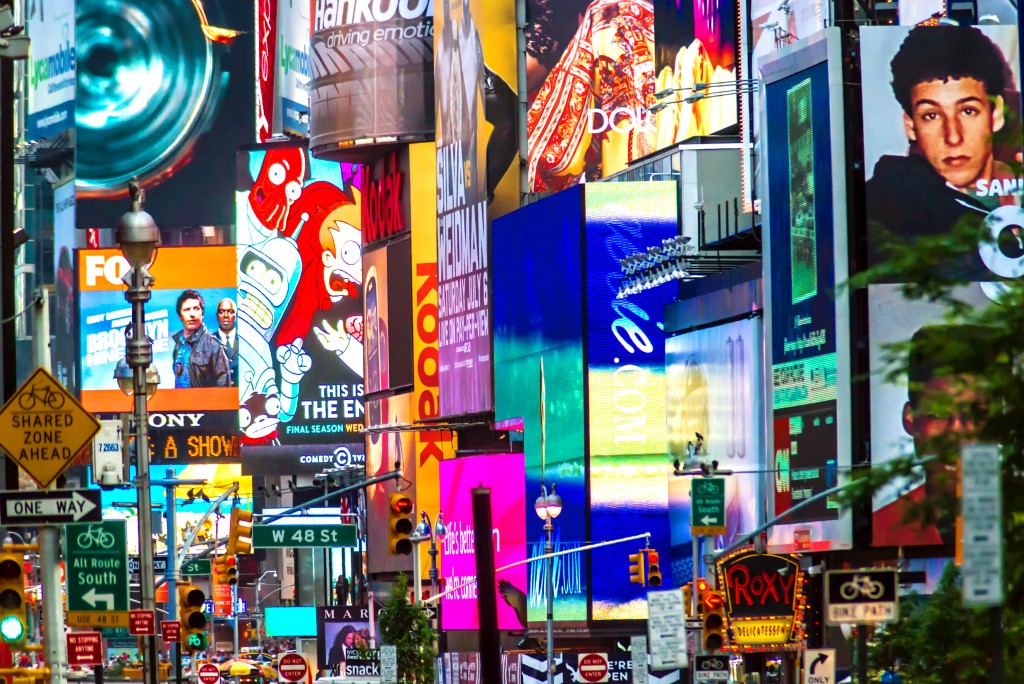Whenever we watch cable TV, we see ads that show attractive people having the best time of their lives. If it’s an ad for coffee, then we see a woman smartly dressed, stomping the pavement with her shiny stilettos. Armed with her strong coffee, she looks like she’s ready to face any challenge. If it’s an ad for a car, then we see a man in strong command of the wheel as his car dashes through a zigzagging highway.
We are used to seeing such ads. And it’s not just on TV. We see it in magazines, newspapers, and billboards. We see them whenever we browse through social media on our phones. The truth is that we are attracted to these people. And that attraction does lead to us buying whatever it is that’s being advertised. But seeing other people has other effects on our ideas of beauty and our mental, social, and emotional states.
Evolution of Images of People in Ads
Before the golden ages of TV, radio, and the internet, there were print media. People relied on newspapers, magazines, and books for news, entertainment, and, of course, advertising. Because of the limited ad spaces in these forms of media, business people struggled with stating all the necessary information about their products and services. They were constrained to just stating what their product or service is, where to reach the business, and probably a one-liner to capture the essence of the advertisement and to catch a potential customer’s eye.
But TV revolutionized the way we advertised our businesses. Suddenly, we could tell actual short stories about the product or service. We could even have a short demo. And, most importantly, we could have real people represent the business. These are the people who are connected to potential customers sitting at home.
A study found that paring attractive models with products that relate to physical appearance are more effective. If consumers are drawn to the model, then they’re drawn to products as well. They are more willing to buy what the advertisement highlights.
Standards of Beauty
Because we saw attractive people in advertisements daily, it’s only natural that we reconsider our ideas on beauty. What makes someone beautiful?
If the ad is about skincare, then we see women with fair skin and faces clear of blemishes and wrinkles. Usually, they have slim figures. They walk gracefully. They smile with such perfect teeth that we immediately start contemplating moving up your next visit to the periodontist.
Whether we’d like to admit it or not, we want to be like these people. We want to achieve the same level of aesthetic and grace. And why? It’s because we associate such beauty with having a perfect life.
From Attraction to Aspiration
Let’s go back to the example of the woman with fair skin, slim figure, and perfect teeth in an ad for skincare products. We see her dominate a corporate job. She wore smart suits and high heels. She gave a successful presentation and received praise from her peers and colleagues. And then, we see her go home. She cooks dinner for her two kids, gets a loving kiss from her husband, and settles into a perfect night.
She has achieved the perfect job, family, and work-life balance. She’s everything we want to be. And because of this, we’re conditioned to believe that if we buy the skincare products that she uses in the ad, we can become like her. We can also achieve her level of professional and personal success.

Effects on Consumers
The primary effect of seeing people living perfect lives is our feelings of FOMO or fear of missing out. We feel that our lives aren’t complete without the products or services being highlighted in the ads. Our self-esteem is vulnerable to these ads. If we don’t watch ourselves, we might end up with self-loathing because our lives aren’t as rich and fruitful as those we see in ads.
A study found that 79% of its respondents feel that ads affected them on an emotional level. Because of this success, it’s noted that ads affected them on a behavioural level as well. Meaning, they’ve acted on their feelings by buying the product or signing up for the service that the ad displays.
Knowing the effects of attractive people in ads will help us rethink our beauty standards and keep our feelings of insecurity at bay. There’s nothing wrong with trying out a new product or service. But what’s important is that we don’t do it because of some pipe dream that if we purchase what was advertised, then we’d get to have the same lives as what we see in the models of the ads.

